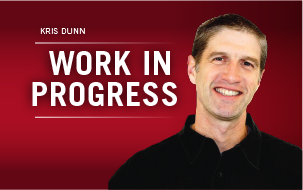When Gray Skinner tried to recruit developers for Droplr, his growing software start-up company in Bend, Oregon, he was disappointed by his options.
Bend is known more as an outdoor sports mecca than a tech hub, but even when he expanded his search to Portland and San Francisco he struggled to find qualified candidates. “Good talent is so expensive, and we didn’t have the luxury of spending all our capital on developers,” he says.
Even when he managed to hire a few code school graduates, they were quickly poached by other start-ups offering six figure salaries and equity. “After we lost the third one, we knew we had to do something different.”
Skinner is hardly alone. More than 80 percent of CIOs reported difficulty filling tech roles in the past year in a survey from Tech Republic. And Gartner says the lack of available tech talent is the leading obstacle keeping CIOs from achieving their objectives.
Part of the problem is where they are searching. While major U.S. tech hubs may be in short supply of unemployed developers, there are lots of cities with strong tech talent eager to work for U.S. companies; they just aren’t based in the United States.
 “When it comes to recruiting you have to think about where the right talent is located,” said Patric Palm, CEO and co-founder of Favro, a collaboration software developer in Uppsala, Sweden. “And in many cases it’s not where you think.”
“When it comes to recruiting you have to think about where the right talent is located,” said Patric Palm, CEO and co-founder of Favro, a collaboration software developer in Uppsala, Sweden. “And in many cases it’s not where you think.”
Cities in South Africa, Vietnam, Slovenia and Lithuania are known for having excellent tech talent who speak English, have advanced degrees and are looking for work, Palm said. And because they are relatively young as tech centers, these locations provide unique opportunities for even the smallest companies to establish themselves as great places to work.
The trick is knowing where to go and how to find the best people once you get there.
Asking customers for help
When Skinner’s team decided to look abroad for talent, they started with their own customer base. Droplr has a large population of users in Poland, so they sent an email via their customer relationship management system saying they would host a recruiting event there later that month to spread the word.
Skinner and his co-founder, Levi Nunnink, ended up interviewing 35 people in two cities over five days and ultimately found their purple squirrel: Radek Paklikowski is a developer with a master’s degree in his early 30s who had lead two previous start-ups, worked with U.S. and U.K. companies, spoke fluent English, and was passionate about being a leader in a U.S. start-up. “We knew right away that he was our guy.”
Skinner and Nunnink hired Paklikowski as vice president and head of the Poland office, and put him in charge of recruiting the rest of the team — with their final approval. Most of the candidates Paklikowski found had master’s degrees in computer science, and one had deep expertise in Amazon Web Service, which is among the toughest skillsets to find in the United States.
“It’s been a great experience, and we are so impressed with how ambitious people are to work with a U.S. startup,” Skinner said. He is also excited about the salaries. Thanks to the local economy and exchange rate, salaries for tech talent in Poland are less than one-third of U.S. rates, and the quality of talent their is much higher. Droplr now has nine employees in Poland and is recruiting two more.
Skinner admitted the process hasn’t been seamless. He and Nunnink each travel to Poland every couple of months, and they’ve had to hire local lawyers to navigate the tax and corporate laws. They also start their days early to overlap time zones. It’s been worth it. In the 18 months since they started hiring in Poland, Droplr went from two employees and $50,000 in debt to 18 people in two countries generating more than $1 million in revenues annually. “Hiring the team in Poland was central to our success,” he says.
While not every start-up will find their dream team in Poland, looking abroad can give cash-strapped companies an edge. “Many companies today have fully distributed teams,” Palm said. “If you are willing to adapt the way you work, geography won’t get in your way.”
Sarah Fister Gale is a writer in Chicago. Comment below or email editors@workforce.com.











 Remember when all you needed to recruit effectively was a basic careers site that had a link to your applicant tracking system and a PDF of the overly aspirational company values designed by your founder that everyone you worked with loved to snicker at?
Remember when all you needed to recruit effectively was a basic careers site that had a link to your applicant tracking system and a PDF of the overly aspirational company values designed by your founder that everyone you worked with loved to snicker at?




